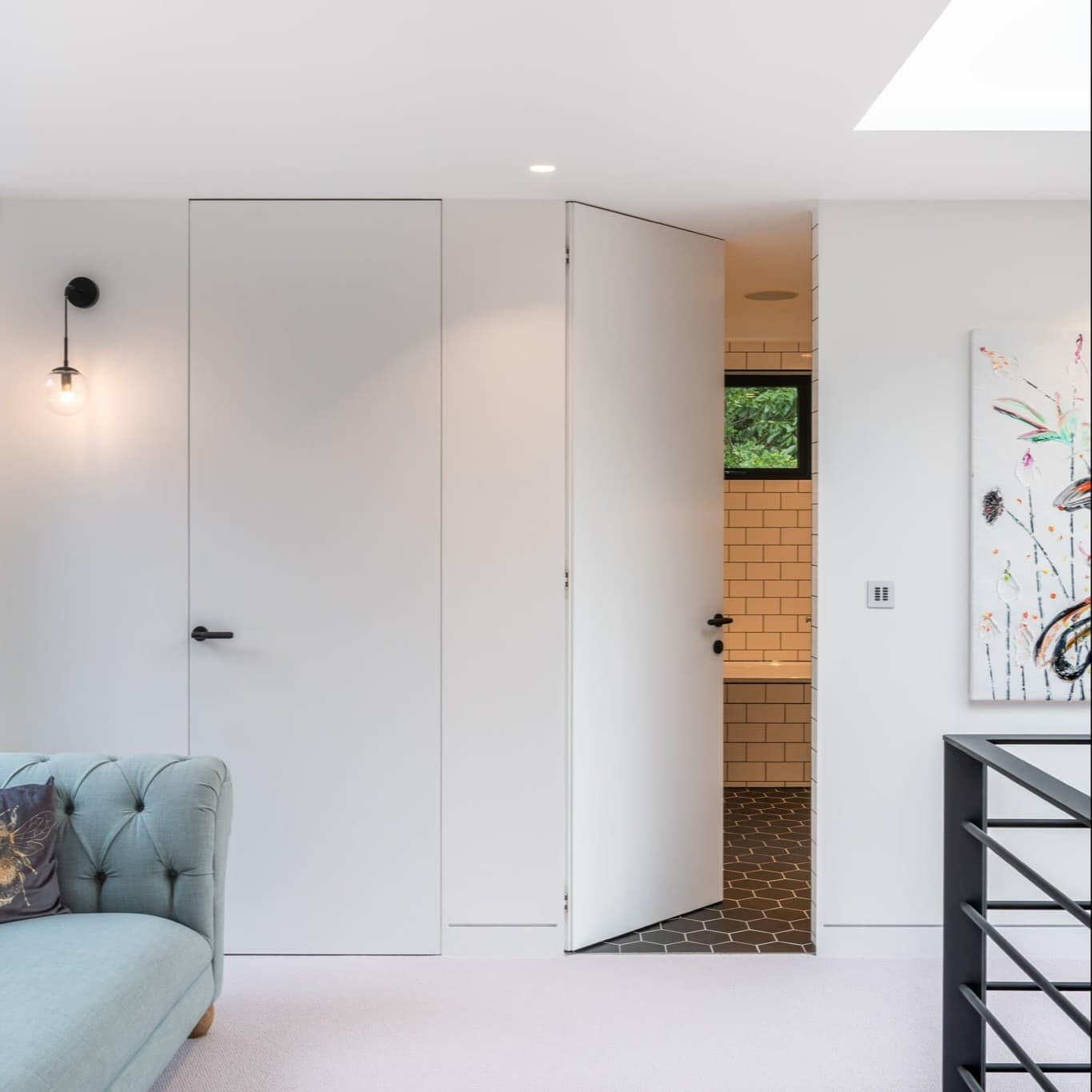What makes the Envo Flush door system different to other jib door systems?

Where do you start when looking for the perfect jib door system for your project? It’s tricky to navigate the market and all the options available, which is why we're going to focus this blog post on answering the question: ‘what makes the Envo Flush door system different from other jib door systems on the market?’.
Let's briefly look at the six key areas that differentiate our jib door system (also known as the Envo Flush) from others.
1. You’re guaranteed no cracking around the frame.
Many in the industry have come to accept that a functional wraparound frame designed for a riser door is acceptable as a contemporary door system. Where these systems wrap around the wall in front of the plasterboard, the stop of the door doubles up as the profile that the plasterers skim up against. This dramatically increases the risk of cracking around the frame.
In comparison, our profile is installed within the stud work.
2. No visible strike plates.
Why go to great lengths to achieve a frameless door and then compromise on the finer details by having an obtrusive strike plate?
There are no visible strike plates on the Envo Flush door system. Instead, we use a magnetic latch, which means that when the door is open, there is no unsightly metal plate and nothing projects from the door. This is a big benefit when working to a minimalist design.

3. One door system for the whole project.
Another key feature is that the thickness of the Envo Flush door system is only 75mm, which means it’s not restricted by wall thickness. This makes it a lot simpler to apply the system universally across a project, encompassing all applications including 90° turns. Furthermore, you do not have to compromise between having pivoting doors on some applications and hinged on others.
4. Low impact.
The robustness of the system, due to the rigid aluminium profiles, means the door operates more smoothly than a standard steel wraparound profile.
One of the main issues with these standard wraparound systems is the complete absence of impact seals and the way they integrate with the plaster bead. These seals are necessary for both acoustic and fire requirements, therefore it is crucial that doors do not bang on return. Riser doors have their place, and we endorse them for risers and cupboards that do not get regularly used. (By regular, we would suggest anything opened more than once a quarter.)
5. It’s not evolution.
This one is about the creation of the system. While many flush, or jib, door systems are evolutions of traditional systems, the ENVO Flush door system has been designed specifically with the high-end residential market in mind. This means that we haven't built on old ideas or tried to adjust what was there to suit, but have started from scratch with the goal of creating the perfect hidden door system.
A good example of this is how many systems have merely adapted their riser door systems to accommodate a flush door. This comes with many trade-offs, such as having to work with different door mechanisms. As inward doors must pivot and outward doors must hinge, the inward opening doors must therefore impact your finished floor. Inward opening doors also require the heel (the back of the door) to be rounded, to allow it to open without interference into the frame. Whilst functionality is achieved with this solution, the finishing details suffer.
6. Make an adjustment.
Last but certainly not least is the benefit of versatility.
If, during installation, something has been fitted incorrectly or plans have changed since specification and order of the door system, you are able to adjust the hinge position, even once fitted. This makes the lives of those on-site easier and ensures the correct finish, so your client’s expectations are still met.
That rounds off the main areas where the Envo Flush door system differs from other hidden, or jib door systems on the market. Hopefully you have a better idea of where we stand and factors to consider when selecting your door system.
If you have any questions or would like to speak to one of the team, please do get in touch – we'd be happy to help:
+44 (0) 208 253 9342